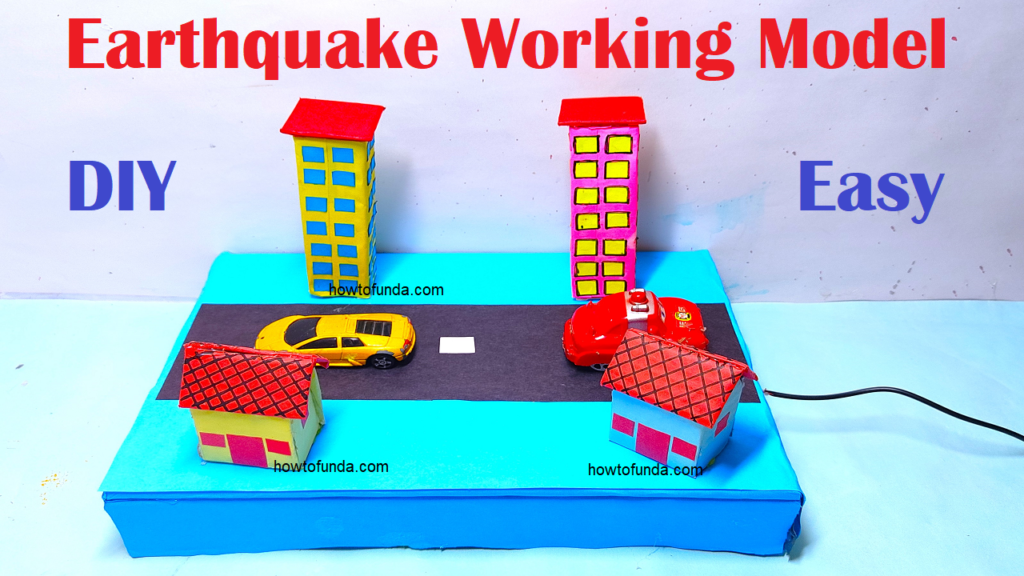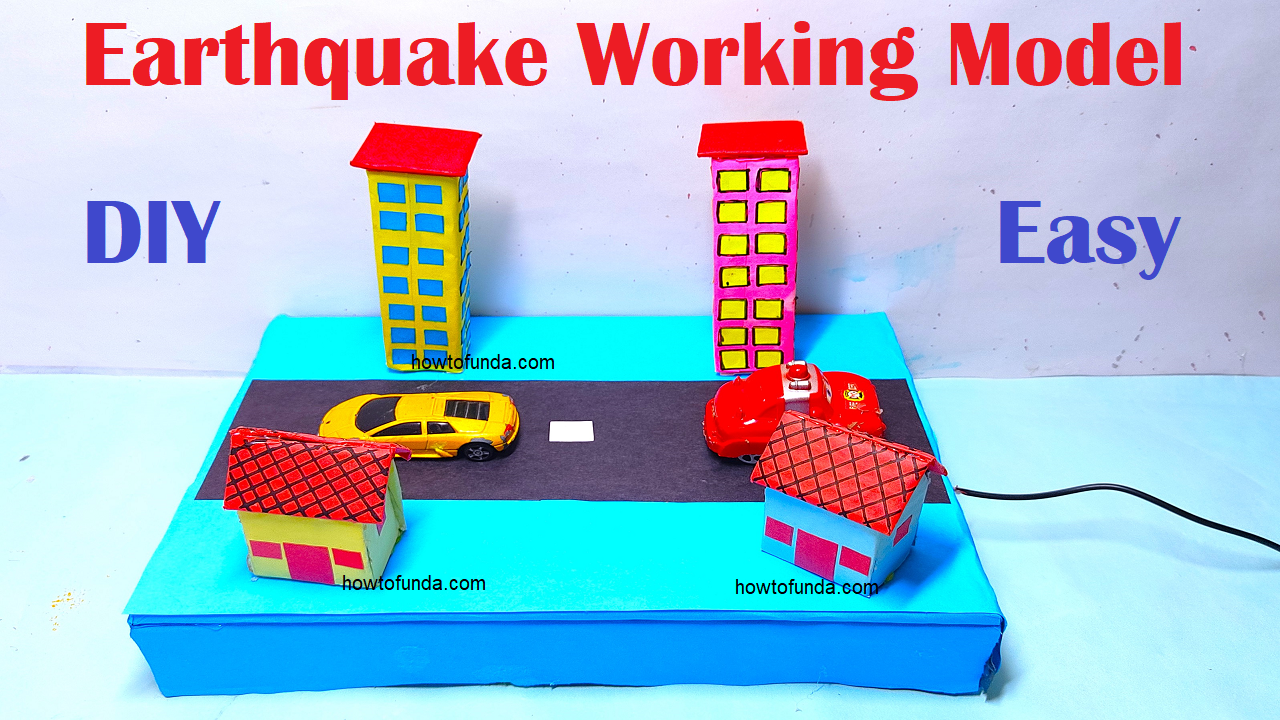An earthquake alarm is a device that detects ground vibrations and alerts people to take safety precautions. This working model uses simple components like sample houses, a DC motor, a 9V battery, and a nut to simulate and detect earthquakes effectively. It is an engaging way to demonstrate disaster management in a science exhibition.

Components of the Model
- Sample Houses: Made from cardboard or similar material to represent structures affected by an earthquake.
- Nut: Acts as a pendulum to detect vibrations.
- DC Motor: Simulates ground vibrations.
- 9V Battery: Powers the motor and alarm system.
- Buzzer: Sounds the alarm when vibrations are detected.
- Cardboard Base: Serves as the foundation to hold the components together.
- Connecting Wires: Completes the circuit for the alarm system.
How It Works
- The nut is suspended as a pendulum on the model. It remains still in the absence of vibrations.
- A DC motor is used to generate vibrations, simulating an earthquake.
- When vibrations occur, the nut swings and touches a metal contact, completing the circuit.
- The completed circuit allows current from the 9V battery to flow to the buzzer.
- The buzzer produces a loud sound, signaling the detection of an earthquake.
Benefits
- Interactive Demonstration: Simulates real earthquake conditions with sample houses and vibrations.
- Educational Value: Teaches the importance of disaster preparedness and the basics of circuit functionality.
- Low Cost: Uses easily available materials to create an effective model.
This earthquake alarm working model is a practical and engaging addition to any science exhibition, helping raise awareness about disaster management and safety measures.

